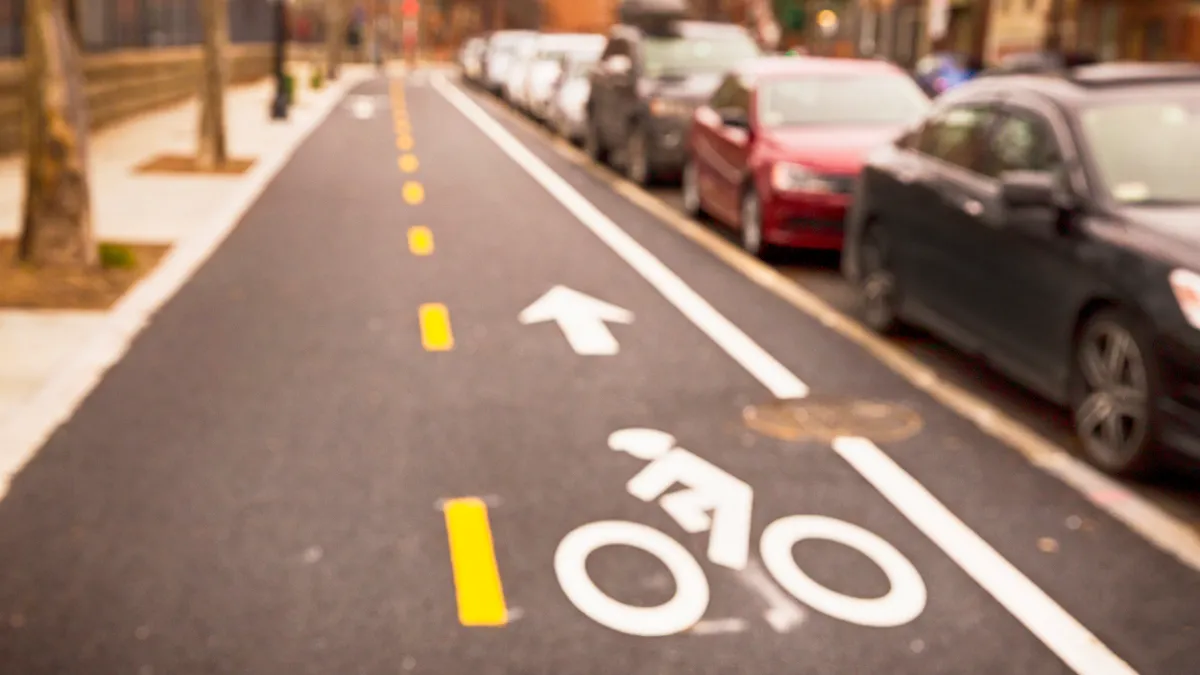Dive Brief:
-
In an effort to reduce roadway deaths among pedestrians and cyclists, Democratic lawmakers introduced a federal bill March 22 to encourage states to eliminate gaps in their protected bike lane and pedestrian networks, according to a press release.
-
The proposed legislation, dubbed the Sarah Debbink Langenkamp Active Transportation Act, would allow states to fully fund bike and pedestrian safety projects with federal money in the Highway Safety Improvement Program.
-
It clarifies that states may use HSIP funds to connect two “or more segments of existing bicyclist or pedestrian infrastructure,” according to the bill’s text. The legislation would also allow local governments, metropolitan planning organizations and regional transportation organizations to directly recommend active safety projects for HSIP funding.
Dive Insight:
Reps. Earl Blumenauer (D-Ore.), founder and co-chair of the Congressional Bike Caucus, and Jamie Raskin (D-Md.) co-sponsored the bill. They argue that such legislation is needed to fix critical gaps in cycling and pedestrian infrastructure that often result in “short, disconnected and confusing” routes that “discourage biking and walking and contribute to inequities in transportation.”
“While ambitious plans to build complete cycling networks exist in many communities, plans have often been stymied because communities do not have the matching funds required for federal grants for active transportation infrastructure,” according to a fact sheet.
The bill is named for Sarah Debbink Langenkamp, a U.S. diplomat struck and killed by a semi-truck in an unprotected bike lane on a state highway in Bethesda, Maryland, while cycling home from her children’s elementary school. She had recently been evacuated from Ukraine by the U.S. government.
“We have a responsibility to make our streets safer for cyclists and pedestrians,” Blumenauer said in a statement. “Sarah’s work took her to dangerous places around the world. Biking home in our nation’s capitol should not have been one of them.”
The League of American Bicyclists, Safe Routes National Partnership and Families for Safe Streets support the bill, the fact sheet states.
According to National Highway Traffic Safety Administration estimates, fatalities increased 2% among pedestrians and 8% among cyclists during the first nine months of 2022 compared with the same period in the year prior.
“There’s a pedestrian safety crisis on our roads, and it is getting worse,” a Governors Highway Safety Association spokesperson told Smart Cities Dive in February.
Under the 2021 bipartisan infrastructure law, Congress increased HSIP funding to $15.6 billion from 2022 to 2026 and mandated that states spend at least 15% of that money on preventing deaths among vulnerable road users, such as cyclists and pedestrians, if such users were 15% or more of the total number of fatalities in the previous fiscal year.
Nearly 50 government, industry and nongovernment organizations, and private-sector companies have committed to taking specific action in 2023 to reduce serious injuries and deaths on the nation’s roadways as part of the Transportation Department’s call-to-action campaign to support its National Roadway Safety Strategy.











